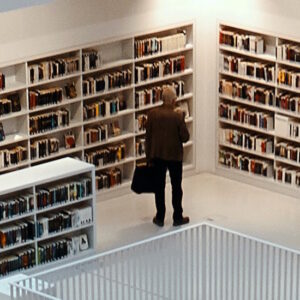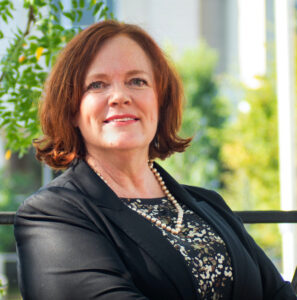We are Translators and Bridge Builders
by Sabrina Watkins

This photo is a beautiful bridge in a water treatment facility. Sustainability leadership work is often about “bridging” two different landscapes, too. Leaders often describe their work as “translators” – we are constantly translating between operations and environmental goals, short- and long-term thinking, internal and external stakeholders and much more.
We are often helping NGO’s and “socially responsible investors” (SRI’s) understand the company, and helping corporate leaders understand “them”. What are your corporate leaders thinking? How could they act this way? Don’t they care? Don’t these investors understand the “realities” and challenges of our business? Sustainability brings together different views, types of action, and unfamiliar goals. “Triple-bottom-line” actions seek to improve social, environmental, and economic performance. Shared value helps the community / stakeholders and the company. Sustainability leaders are always building bridges – internally and externally.
Our world needs more “translators”, IMHO. When things feel divisive, we don’t get as much done. When we only understand half the story, our decisions aren’t as strong, our actions not as durable.
The first time I flew to New York, in 2009, to speak with investors from the Interfaith Center for Corporate Responsibility, it was a strategic shift for our company. We had “ignored” these “smaller” investors to a significant extent but had decided to try engagement after several years of frustrating handfuls of shareholder resolutions. “They just don’t understand” – so we decided to try talking with them! I was equipped with the usual corporate armor- a classic black suit and a comprehensive slide deck.
Fortunately, Bill Shiremen, founder of Future 500 happened to be in my stakeholder engagement specialist’s office. I introduced myself, rollaboard trailing behind me as I headed to the airport shuttle. I asked, “What one piece of advice would you give me”. He answered, “listen first”. Best piece of advice ever.
I entered the room in ICCR’s strongly spiritual center on Riverside Drive, surrounded by decades-old stately places of worship, and introduced myself (as I usually would) to the investors in the room – retired clergy, nuns who had worked in the places we had facilities, indigenous people, various experts – all very thoughtful passionate people who cared that we did business very very well.
As we began the meeting, I asked that we go around the room for introductions. And I asked that each person include something they hoped to discuss in our meeting. With that question, our meeting became a dialog. I took notes. I learned so much about where they had worked, their experiences, their passion for reducing the harm companies sometimes do to the environment and local communities, and their passion for good management systems. It took nearly half the time allocated for the meeting to hear their thoughts. I got a little nervous; I had a LOT of slides.
My presentation became focused on what their specific interests were. We covered all the slides, some more briefly than I’d planned, and some in more depth to address their concerns. Afterward, they told me that at their last conference, the speaker from another company in my industry “breezed in, presented, and breezed out”. Their resulting trust in what the company was doing was minimal. I hoped we’d done better. And over the next few dialogs, it became clear that we were succeeding in listening, learning, and sharing our perspective. Shareholder resolutions related to sustainability against our company dropped to near-zero and stayed there for nearly a decade.
That’s how beautiful a bridge can be – moving all of us to a place where we can learn and grow together. So, here’s the story of the beautiful bridge pictured. I’m a member of the International Society of Sustainability Professionals and saw this photograph posted there by Rachel Watson. It’s the King County Water Treatment Facility- an example of how stakeholders – artists, engineers, and other stakeholders can take something that’s often unsightly and a “brownfield” and re-think it as a place that people can enjoy, native plants can flourish, and the work of water treatment can still be done as effectively, maybe more so. That appeals to my feelings about sustainability and my hope for the world- it’s a success for the environment and the community – and I hope economically as well. This bridge brings together experts who might not always be in dialog about facility construction and succeeds in “translating” a typically ugly facility into something harmonious with nature and the community. We need plenty of bridges like that – beautiful and collaborative!


